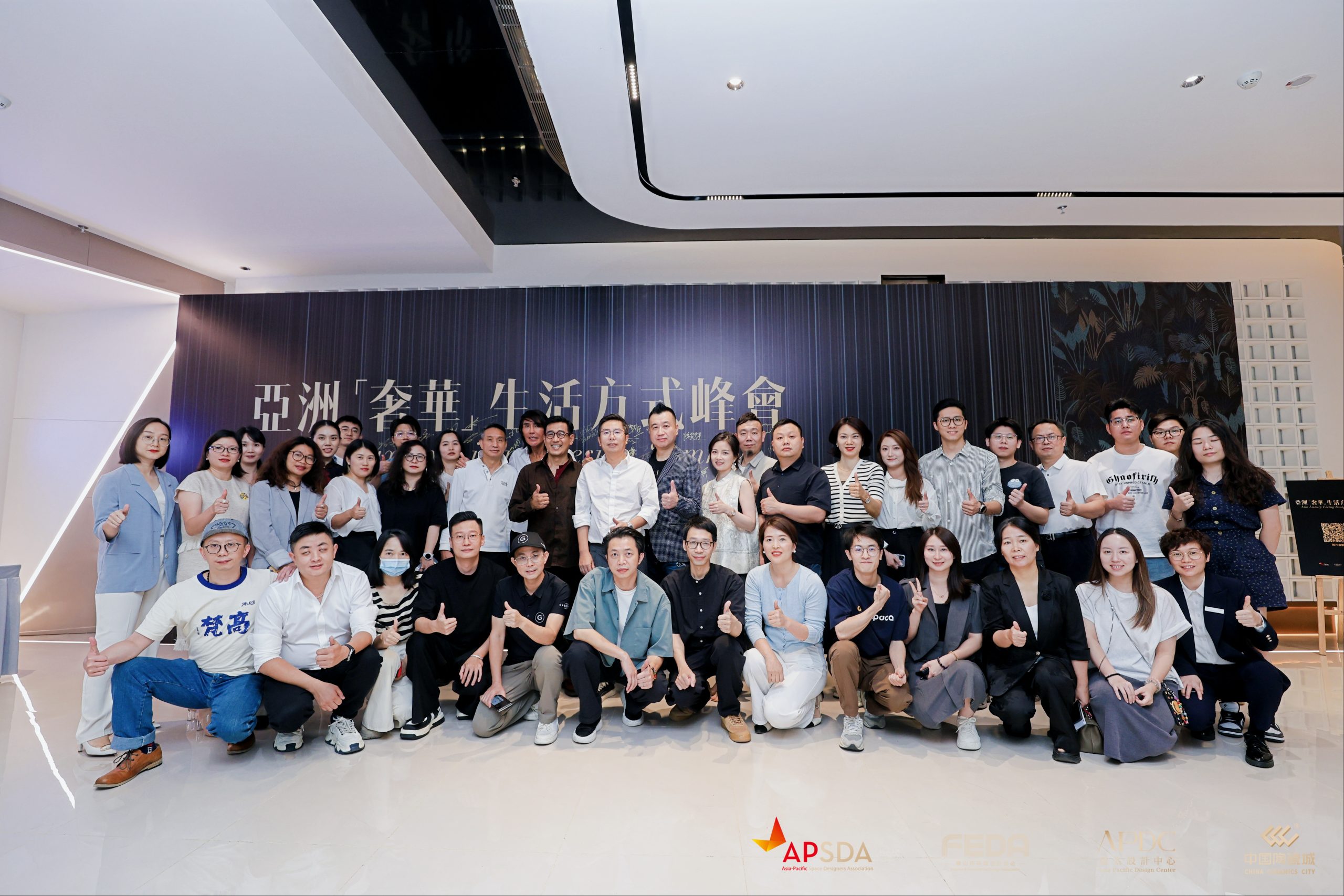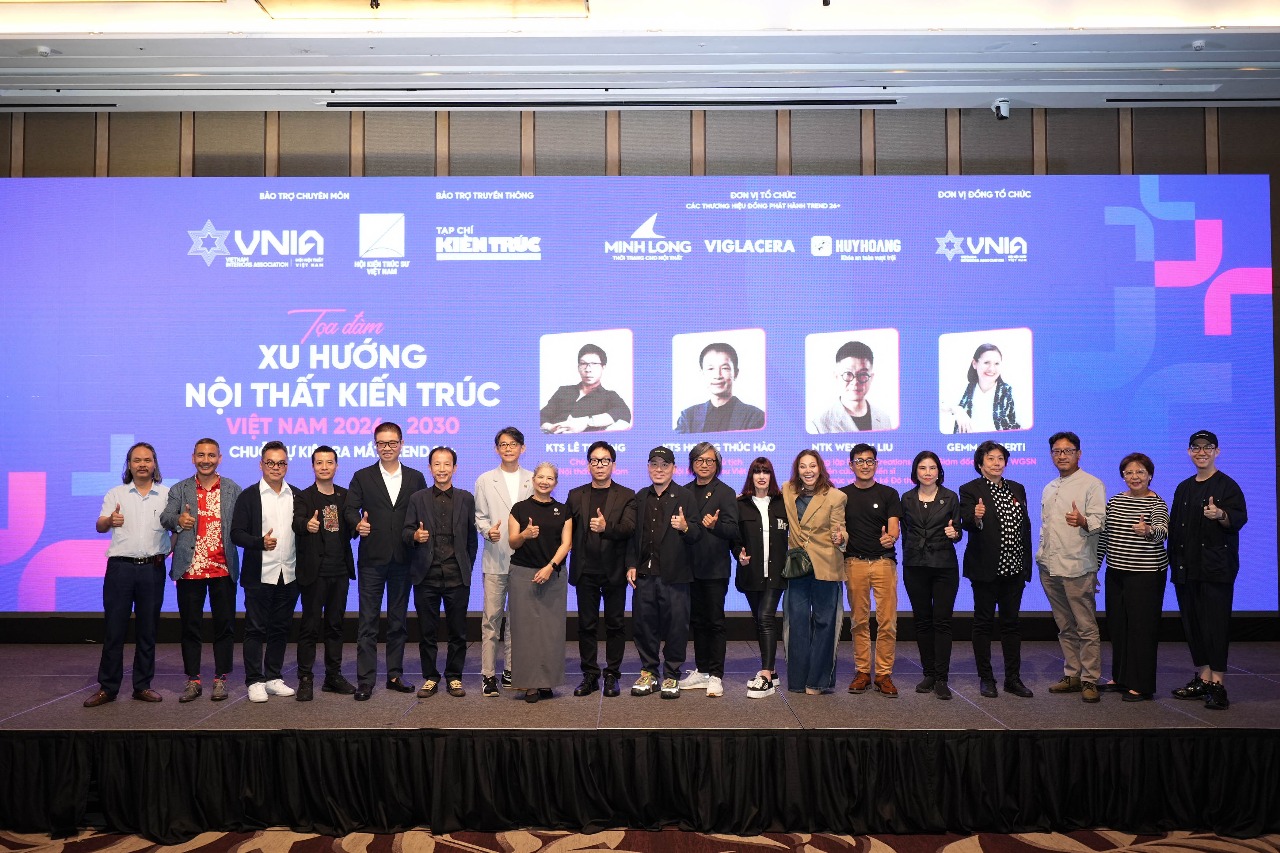The expert seminar Interior & Architecture Trends in Vietnam 2026–2030 took place on 6 June at Lotte Hotel Hanoi, drawing significant attention from industry professionals, businesses, architects, and designers both domestically and internationally. This event also marked the official launch of Trend 26+ — the first trend publication dedicated to Vietnam’s interior design industry, an initiative by three pioneering brands in interior materials and accessories: MinhLong Wood, Viglacera, and Huy Hoang Locks. The publication is professionally endorsed by the Vietnam Interior Design Association and the Vietnam Association of Architects, with Architecture Magazine serving as the media sponsor. The event also welcomed representatives from WGSN (the global trend forecasting organization) and APSDA (Asia-Pacific Space Designers Association).
As part of the launch series for Trend 26+, the seminar brought together leading experts in architecture and interior design to analyse and forecast major design trends for Vietnam over the next five years. The conversation extended from the global context, highlighting major shifts affecting society, aesthetic preferences, and consumer psychology around the world, while also offering practical insights from across the Asia-Pacific region, where many countries are striving to assert strong local identities in design.
As part of the event, Prof. Keat Ong, a celebrated and awards-winning designer currently presiding over the Asia Pacific Space Designers Association (APSDA), an alliance of 14 national-level professional associations, shared the following in an exclusive interview.
With many years of experience in Singapore, a country that has undergone strong globalisation while also striving to preserve its local culture, what are your thoughts and reflections on “design identity” in the context of international integration?
On one hand, a designer’s personal identity, comprising culture, upbringing, values, aesthetics, inevitably influences his or her work. Even designers who claim to be “neutral” or “objective” are bringing their worldview into what they create, consciously or unconsciously. On the other hand, design is always made for others. It’s inherently relational. So design identity is shaped by the needs, cultures, and aspirations of the people and contexts we’re designing for.
In the context of globalisation, design’s role in creating or preserving identity is both protective and generative. Globalisation tends to flatten cultural differences. That’s where design comes in, playing a critical role in resisting that flattening by; protecting local aesthetics, traditions, and narratives; amplifying marginalised voices; and cultural specificity in branding.
Globalisation challenges identity, but it also gives designers new tools to preserve, remix, and evolve identity. Good design in a global context doesn’t erase local identity. Instead, it extends it, translates it, or strengthens it.
Singapore didn’t leave its design identity to chance, but has taken a highly strategic and deliberate approach. The “Singapore: Design City” initiative, introduced in the early 2000s, marked a pivotal moment in positioning design as a key pillar of national development. With the founding of the DesignSingapore Council in 2003, the government signaled its commitment to embedding design thinking into everything from economic growth to public policy.
Singapore’s design identity mirrors its political, economic, and architectural ideals. It has become a strategic tool in shaping the nation’s global image. Flagship events like Singapore Design Week further cement its role as a key player in Asia’s creative economy. By integrating design into national branding, Singapore has successfully positioned itself as a global design hub and a model for design-led innovation in the region.
Given its deep-rooted influences from colonial history and various socio-political shifts, how is Asian interior design, in general, “adapting” to contemporary contexts?
Interior design across Asia is deeply rooted in a complex interplay of ancient cultural philosophies, colonial legacies, post-independence modernisation, globalisation, and a renewed drive for cultural preservation and reinterpretation. At the heart of this evolution lies a desire to uphold distinct cultural identities while engaging with a global design language.
These are the common characteristics Asian countries share in terms of preserving cultural identity while adapting to the global design movement:
1. Selective Hybridisation
Asian countries rarely adopt global design trends wholesale. Instead, they blend global aesthetics with local traditions, creating hybrids. For example, blending modern forms with traditional materials such as bamboo, rattan, lacquer, batik.
2. Revival of Traditional Craft
In response to globalisation, traditional crafts have been reframed as luxury or boutique design. For example, Peranakan tiles in Singaporean homes, ikat fabrics in Indonesian interiors, and Ming dynasty-inspired furniture in Chinese homes.
3. Localisation of Global Brands
Localisation of global Brands: Multinational brands often adapt their interiors and branding to local cultural aesthetics. For example, hotels in India integrate Jaali (lattice) patterns and regional textiles.
4. Emphasis on Storytelling & Heritage
Interior design and product design increasingly use narrative as a selling point. Designers actively tell the story of cultural elements used in a project. This approach turns interiors into cultural ambassadors — part product, part experience, part heritage preservation.
5. Sustainability Framed Through Tradition
Many sustainability practices align with traditional ways of living. For example, the use of locally sourced materials to reduce environmental footprint as well as passive cooling designs such as overhanging roofs, courtyards, natural ventilation.
6. Cultural Identity as a Market Differentiator
Cultural uniqueness is increasingly leveraged as a strategic advantage in global markets. For instance, some Japanese brands embody minimalism and a deep connection to nature, while Indian brands embrace vibrant maximalism and rich colour palettes. Meanwhile, many Southeast Asian brands highlight tropical elements and artisanal craftsmanship, offering a distinct aesthetic rooted in local identity.
- Social Bird Cafe, Lijiang, China
In Vietnam’s Trend 26+, you mentioned the contrast between the popularised approach to culture, often heavily utilised by the tourism industry and in-depth research into local cultural heritage. In your view, what is an effective way to “tell a cultural story” through contemporary design, while maintaining both commercial appeal and visual impact?
I reckon Vietnam, with its fast-growing economy, has the potential to bridge the old world with the new, simply because many craftsmen of traditional art are still in abundance at this point. Oftentimes, vernacular and traditional skills can only be passed down through a few possibilities: if the society deems it relevant; if it’s fashionable; and if it’s of national importance. The latter is usually a top-down approach where government has to step in to enforce certain existence or continuation of certain skill-sets. However, it will be extremely difficult to implement if the particular skill set is not popular or made popular in the first place. The relevance of the skillset will be apparent when the resultant end-products are able to be made profitable.
Along the same note, I have had the privilege to be selected by the prestigious China Academy of Art to design their first ever exhibition booth in one of the largest design expo in Shenzhen last year. My team was tasked to create an exhibit with the intention to display some of the skillsets and products listed under the UNESCO Intangible Cultural Heritage list like textile-looming, wood carving, bamboo weaving, furniture making. Knowing the fact that if I need to captivate the attention of the audience in a fast-paced environment of an expo, I need to reinvent the way these traditional crafts are presented. A good example of this is turning traditional fabric and wallpaper samples into “dragon scales” donning three majestic and symbolic dragons rising towards the “clouds” which are essentially bamboo woven installations. The traditional furniture and artifacts are the resultant spaces created by the intertwining installations.
- Trend 26+, the first trend publication of Vietnam’s interior design industry
Trend 26+ is a notable trend publication from Vietnam for the 2026–2030 period. Its approach to compiling international trend insights, combined with contributions from experts across the Asia-Pacific region, appears to signal an effort to shape a regional interior design identity. Do you see this as a meaningful step towards building a design language unique to the region?
I think it’s commendable and a great effort to help bring Asian design to the next level. Image-building for Asia is a collective journey, and Trend 26+ has certainly made Vietnam and the region proud.
Cross-national collaborations play a vital role in shaping the future of design by fostering innovation through cultural exchange. They provide designers with opportunities to share ideas, aesthetics, and technical know-how, enriching creative practices on both sides. These partnerships also open doors for local talents to access international markets, while introducing advanced tools, technologies, and project management skills that elevate local capabilities. Often, they spark a renewed interest in traditional crafts, as global collaborators embrace indigenous materials and techniques, promoting cultural preservation. Additionally, such collaborations frequently extend into education, through workshops, residencies, and academic exchanges, nurturing the next generation of design professionals and deepening global understanding.





